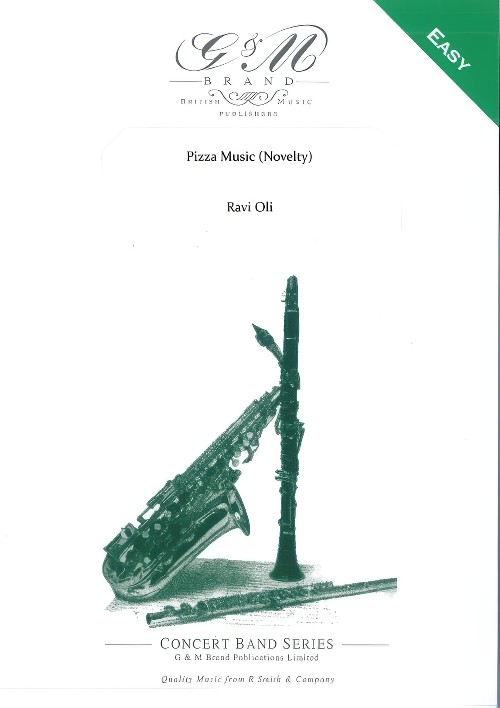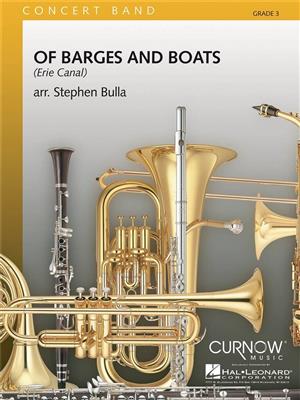Results
-
 £9.95
£9.95Pizza Music (Novelty) (Concert Band - Score Only) - Oli, Ravi
This pepperoni special is probably the first piece yet written calling for "molto mozzarella". It combines Ponchielli's Dance of the Hours with "pizzicato Polka". If you were unsure of your Italian condiments, this is the work on which to learn. It is rumored to be Ravi Oli's only contribution to the (hors d') oeuvre. Delicious
Estimated dispatch 7-14 working days
-
 £104.99
£104.99Light-walk Wind Band Set (Score & Parts)
Change your band into a Big Band with the swinging sounds of this composition. It is a transcription by top arranger Klaas van der Woude of original light music by Barrie Gott. Various instruments can play the solo in this versatile piece, and there is even an invitation to improvise! . The audience will find it impossible to keep still as your band plays the rhythmic Light-walk. However, that's no problem: dancing is allowed! 03:30
Estimated dispatch 7-14 working days
-
 £149.40
£149.40Hoppesltt - Øystein Olsen Vadsten
This is an original piece of music composed by ystein Olsen Vadsten, inspired by old Norwegian folk dances. "Jumpety Jump" actually started out as a "reinlender" (Norwegian Folk Dance) which origins from Rhinland. The reinlender is well disguised in this arrangement by adding the shuffle- and swing style to it. The piece is first of all meant as a "happy go lucky" tune, but is full of rhythmical and technical challenges. Its put up as a jazz-tune, first presenting the melody, then "improvisasations" by the different instrument groups, before going back to the first theme. The title "Jumpety Jump" refers to the kind of jumping feeling the shuffle groove gives.
Estimated dispatch 7-14 working days
-
 £57.50
£57.50Of Barges and Boats
This swinging setting of one of America's great old tunes, The Erie Canal, is a guaranteed crowd pleaser! Intriguing harmonies are a hallmark of this remarkable arrangement by Stephen Bulla, and you know the band will love playingin this easy-flowing and natural rhythmic style. While it will spark up any spot on your concert program, consider using it for a new and different type of closer. This is a great tie-in with American history & geography. (Grade3)
Estimated dispatch 7-14 working days
-
£101.50
Ascending - Larry Clark
It is all too common for pieces to be written for the loss of members of high school bands. This is such a piece, but it is uplifting and inspiring, serving as a touching tribute to the lives lost. The piece takes the listener on a journey through the stages offerief and uses a popular hymn as the basis for this serious work by popular composer Larry Clark.
Estimated dispatch 7-14 working days
-
£106.95
Armed Forces - The Pride Of America! - Capt. Alfred H. Miles
This is the definitive patriotic armed forces tribute. It features the official songs of all five branches of the Armed Forces, plus The Pledge of Allegiance and The Star-Spangled Banner, with optional audience participation. It even includes parts of Sousa marches as interludes! At under seven minutes' duration, this is ideal for chorus and piano or with concert band! (The U. S. Army song is the original The Caissons Go Rolling Along version.) Reproducible string parts are also included in the set for string orchestra.
Estimated dispatch 7-14 working days
-
£84.99
A Western Christmas - Paul Curnow
Now here is something different for Christmas! Who could even think up a concert recipe like this? Peel a bunch of well known Christmas melodies. In a large concert auditorium mix them with whole box of recognizable Old West music styles and conventions. Season well with humor. Bake under the stage lights, and what do you get? A WESTERN CHRISTMAS! You really have to hear it to believe it! You betcha! This is the one your winter concert audience will be talking about long after the show is over!Are there still some "wide open spaces" left on your winter concert program? Yeeeee-Haw!
Estimated dispatch 7-14 working days
-
 £67.95
£67.95Knights Of Chivalry - Randy Navarre
One can easily imagine in the days of Castes and Kings, how this composition may spark the feeling of what it may have been like for Knights of the Kingdoms to not only protect the Lords of the Castle, but also be chivalrous to the Ladies of the Court. Dancing at the feasts and festivals, escorting the royalty to various events. Knights had much more to do than fight. They were allowed to have fun. Sometimes. Like all of our Grade compositions, its main purpose besides giving good and interesting music for young musicians to play, is that it is an opportunity for the band director to teach some aspect of music. This is a great composition for introducing eighth notes and following dynamics. No clarinet crosses the break, and the 1st trumpet's highest note is A (in the staff). Everyone plays rhythmically together. Only the drum part may vary. All chords of the diatonic scale are used to make the harmony more interesting with no accidentals.
Estimated dispatch 7-14 working days
-
 £87.99
£87.99David of the White Rock - Traditional
This is an ancient Welsh air that was first published in Relics of the Welsh Bards in 1794. Dafydd (David) Owain was a famous Welsh bard who lived on a farm called Gareg Wen (The White Rock) in Eifionydd, Carnarnvonshire, North Wales. Tradition has it that on his deathbed he called for his Harp and composed this lovely melody, requesting that it be played at his funeral. Accordingly, it was later played at the parish church of Ynys-Cynhaiarn. Lyrics were later added by Ceiriog Hughes, which describe the melody's inspiration. This version for Concert Band retains all the beauty and simplicity of the original.
Estimated dispatch 7-14 working days
-
£91.99
Forged in Fire - Rob Romeyn
An epic programmatic piece, "Forged In Fire" is a work of vibrant energy, vivid color and immense power. It draws inspiration from the immense power and uses of fire, and its effect on early civilization and industrialization. A calm and sensitive introductions leads to a new theme at a quickening tempo. This theme, stated simply at first, is then embellished by a driving rhythm multi-meter effect, and further developed with layered contemporary harmonies, changing textures and variations on the theme. After a breathtaking climax, the original theme is restated, more powerfully this time. It then subsides, before building to a shimmering, red hot ending that will leave your audience breathless. Certain to become a mainstay for concert and festival use. Not to be missed!
Estimated dispatch 7-14 working days
